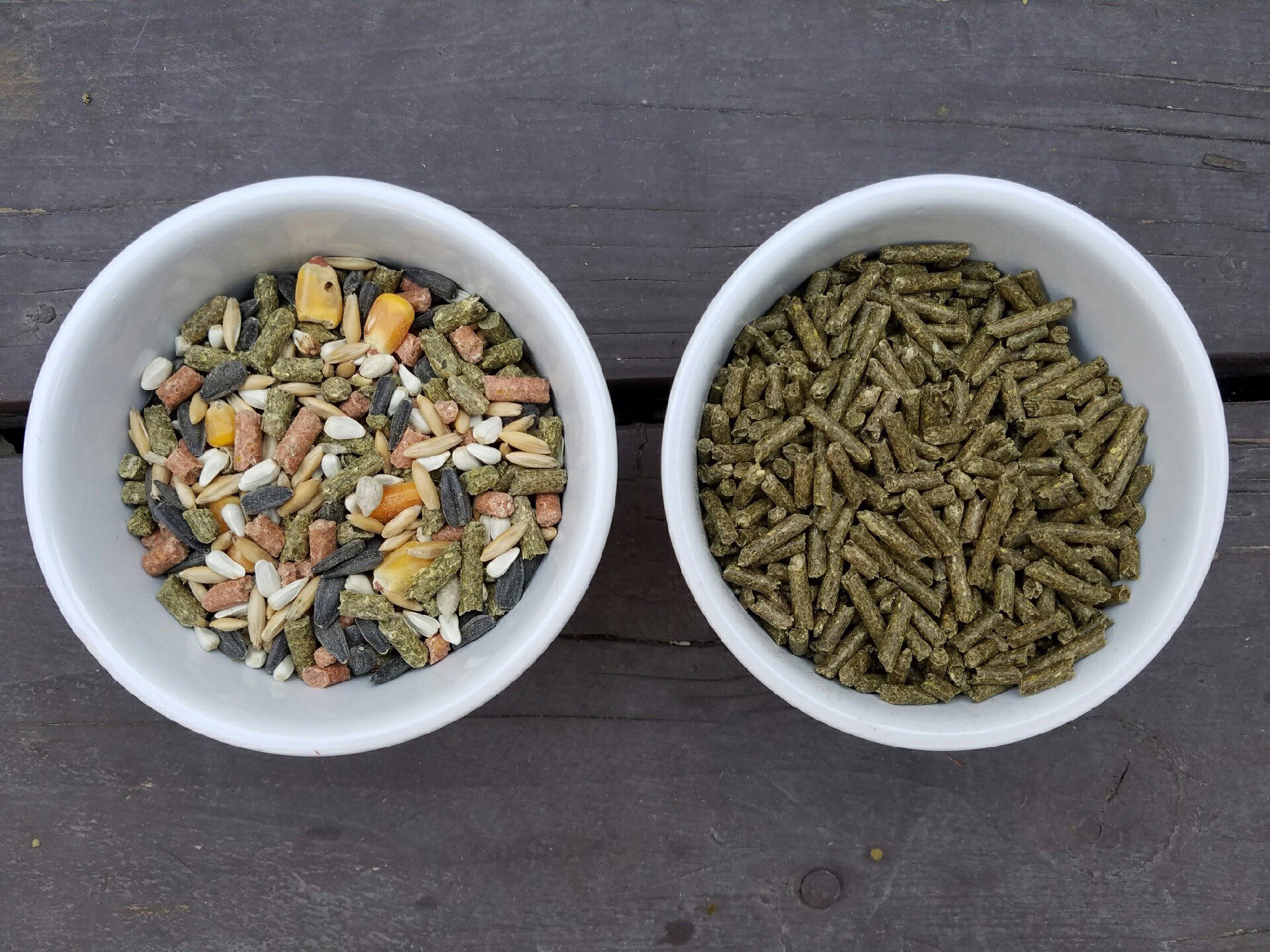How to Choose Rabbit Pellets
Do your pellets look like the left side or the right side?
Some rabbit pellets aren't as healthy as others.
If they look like the left, consider switching them to ones that look like the right and here is why.
Pellets should NOT contain dried fruit, seeds, nuts, colored crunchy things, or other things that are attractive to the human eyes. We call the one on the right a salad with candy thrown in. Who wants to eat the salad when you can just pick out the candy? Your rabbit feels the same.
Rabbits are strict herbivores, and in nature they rarely get fruit, nuts, or other such fatty, starchy foods often found in the bags at the pet store. While they are appealing to the eye, they provide no benefit to your rabbit/guinea pig. The complex flora of the cecum can quickly become dangerously imbalanced if too much simple, digestible carbohydrate is consumed--especially if the diet is generally low in fiber. The result is often "poopy butt syndrome," in which mushy fecal matter cakes onto the rabbit's behind. This is a sign of cecal dysbiosis, which can foment much more serious health problems.
A good quality rabbit pellet should have at least 22% crude fiber, no more than approximately 14% protein, about 1% fat and about 1.0% calcium. Check the label on the rabbit pellets before you buy. Most commercial pellets are alfalfa-based, which means they're higher in calories and lower in fiber than timothy-based pellets!
Baby rabbits may be fed unlimited pellets, as their bones and muscles need plenty of protein and calcium for proper growth. However, the calories and nutrients of commercial pellets fed ad libitum exceeds the needs of a healthy adult rabbit, and will not only promote obesity, but discourage the rabbit from consuming enough hay to ensure good intestinal health. If your pellet bag claims that adult rabbits don’t need measured portions, you need to pick another pellet.
Providing pellets to your bunny is a great way to supplement their diet, but is not mandatory. You can replace the nutritional value without the calories by increasing the variety and serving size of vegetables, but most people prefer to feed a pellet and plant based diet!
Visit: http://www.therabbithouse.com/diet/rabbit-food-comparison.asp to see where your current pellet falls!

